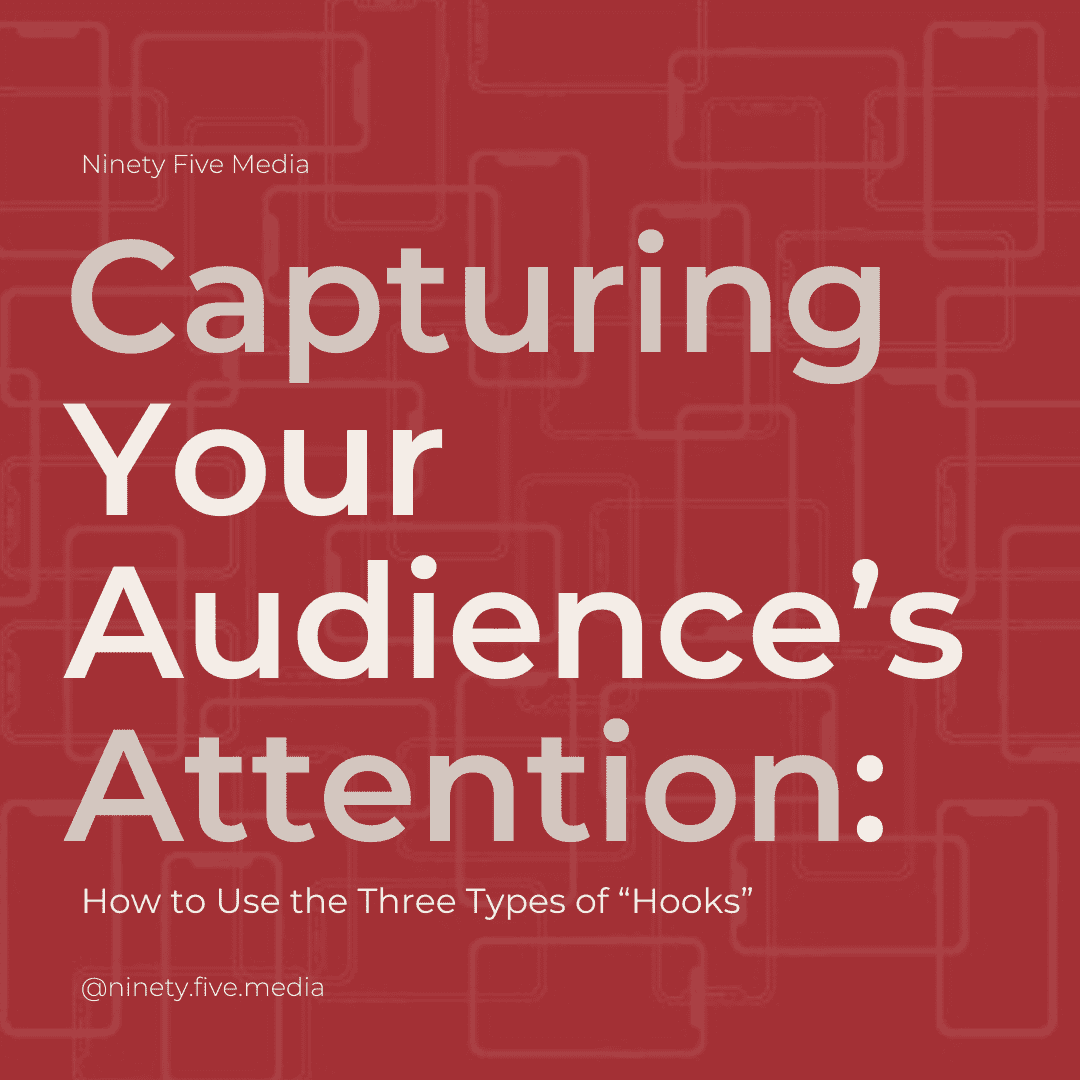When attention spans are shorter than ever, capturing your audience’s attention within the first few seconds of your video is crucial. There are key ways to do this that your favorite accounts are already doing, whether you know it or not! These hooks are essential to keep viewers engaged and interested in your content. Let’s look at the three main types of hooks in video content: visual hooks, written hooks, and verbal hooks.
Visual Hooks
You see subliminal visual hooks all. the. time., you just might not recognize them as such! We are naturally drawn to visually appealing content, making this type of hook incredibly effective. Examples of visual hooks include going from standing to sitting, putting on lipgloss as you’re talking, or pouring a drink. Each of these are a tactic to draw in the viewer based on what they’re seeing, even if they’re not listening!
Written Hooks
Written hooks involve using text to engage viewers, often by displaying a compelling statement or question at the start of the video. These types of statements are written in a way that a user can immediately identify themselves with, which is why they work so well! (Insert: “is this play about us?!” meme.) Examples of written hooks include bold headlines that summarize the video’s main point, intriguing questions that make viewers want to watch the video to find out the answer, and surprising facts that spark curiosity. When creating written hooks, you can also play around with the hierarchy of text; a system that allows the reader to immediately know the order of importance of what’s on the screen. Keep the text concise and impactful, use strong language to evoke emotion and interest, and pair the text with engaging visuals to enhance its effectiveness!
Verbal Hooks
Verbal hooks rely on spoken words to draw in viewers. A strong verbal hook can set the tone for your video and create a connection with your audience right from the start. Examples of verbal hooks include narration that introduces the topic in an interesting way, personal stories that relate to the video’s content, and provocative statements that challenge viewers’ expectations or beliefs (These are all but guaranteed to create a lot of engagement!). To create effective verbal hooks, use a natural, conversational tone to create a genuine connection with your audience, open with your most interesting or surprising point to immediately capture attention, and tap into emotions like curiosity, excitement, or empathy to keep viewers engaged.
While there are creators that are known for the one type of hook they use, you can really leave a mark on your audience by using all three at once! You can also test different types of hooks and different variations of each hook, and see which works best for your brand.
Are you ready for experts to handle all of your social media strategy? Get started with us today!

Be the first to comment